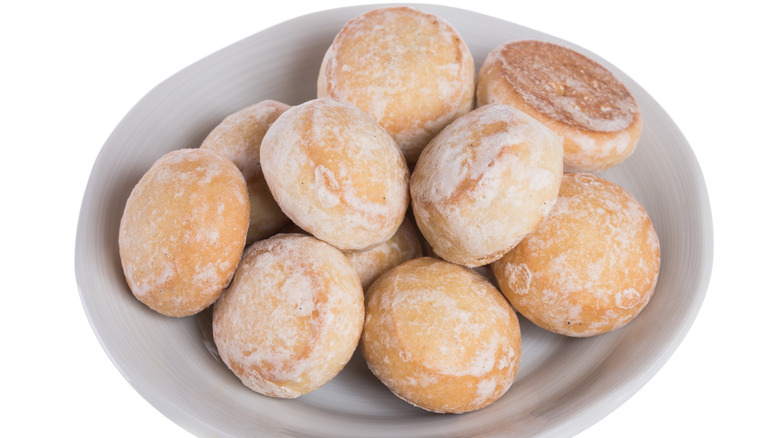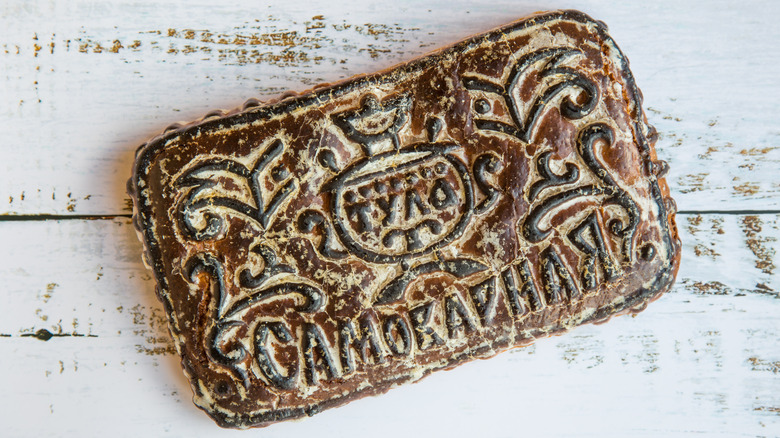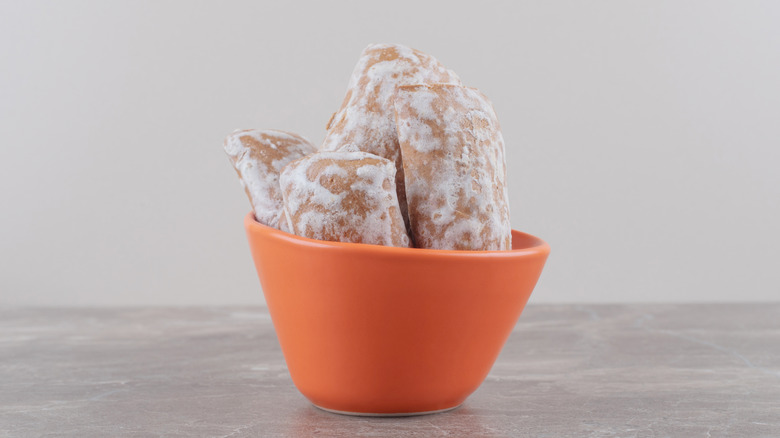Russia's Traditional Pryaniki Spice Cookies Date Back To The 9th Century
The best gifts are made with love — there's a reason grandma's cookies are so memorable. Plus, such sweet treats store well, too, explaining their historic interlinking with the holidays. Back when food storage was tricky, crafting a batch of doughy dried goodies allowed for enjoyment over several weeks. Cookies could be baked and then transported, providing a perfect gift to family or a stranger. Such traditions spread through numerous cultures, especially around Europe — examples include Norwegian krumkake and German pfeffernüssem, notes Martha Stewart.
In Russia and other Eastern European countries, the festive cookie of choice is called a pryanik. Crafted with an abundance of spices, these small biscuits are perfectly built for dipping into a mug of coffee or tea. With a soft texture on the inside, but a pleasant snap on the exterior, they're best to craft in large quantities — everyone will want more, notes Mom's Dish. Let's dive into what these tasty cookies are all about.
What are pryaniki?
Pryaniki, plural for pryanik, are beloved Rusian cookies consumed alongside tea. While not strictly eaten during the holidays, they are associated with Christmas — similar to gingerbread cookies. Consumed since the 9th century, pryaniki historically carry spiritual significance, intertwined with weddings, births, and other celebrations. Their name, which means spiced, is derived from the flavorings introduced by Middle Eastern and Indian traders during the middle ages. Their primary essence is honey, which gives them a sweet, but not saccharine undertone, complemented with berry juice, a rye flour base, and plenty of spices. While additions vary, cornerstone flavors include clove, cardamom, cinnamon, and ginger, as well as optional ingredients like citrus peel, nutmeg, allspice, and pepper, via The Spruce Eats.
In addition to the common small round cookies, pryanik also refers to a loaf of honey bread stuffed with jam and flavored with the same spices. Interlinked with the city of Tula, these long-storing breads convey cultural symbols like birch trees and other decorative designs, notes Russia Beyond.
How to make pryaniki
In Russia, many buy their cookies from the store, mass-produced in a manner similar to graham crackers in the U.S. For a more delectable alternative that's softer in texture and richer in flavor, opt to make your own. While flavors vary, the process dependably starts with a whisked base of butter, sugar, and honey. Once thoroughly combined, the spices are integrated, and the mixture cools. Next, eggs, baking powder, baking soda, and vinegar are added — inciting a fizzy reaction. Flour is slowly whisked in, forming a thick, paste-like mixture. While it's possible to use a stand mixer, it's best to complete the process by hand to easily combine the dense substance. The dough is divided into single-tablespoon servings, and baked for around 20 minutes, explains Olga's Flavor Factory.
A prominent characteristic of the cookies is the exterior glaze, which must be deftly applied. Concocted from a ratio of one part confectionery sugar to one part egg white, applying the glaze to every cookie is difficult. Peter's Food Adventures suggests three approaches– the dip, brush, or bowl method. The latter is the quickest but messiest, simply tossing the cookies with glaze in a bowl. The brush method is the most exacting, rendering a uniform glaze but taking the most time. And finally, the dip method, submerging each biscuit, requires the most glaze but yields a dependable result.


